Margo Orlando Littell's Blog, page 2
December 12, 2017
My Best Reads of 2017
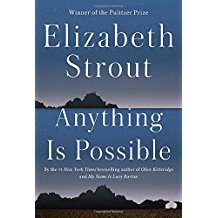 In the rural town of Amgash, Illinois, many people are poor, and some are poorer. As children, Abel and Dottie Blaine dig for food in dumpsters. The Barton kids are subject to ridicule at school for their poverty and their father’s eccentricities. The Nicely sisters, called--meanly--the Pretty Nicely Girls, see their world fall apart when their mother’s sordid affair is discovered. Across Amgash and in nearby towns, men and women find that childhood wounds fester instead of heal--even decades later. Though it’s possible to change, the children they once were live on. Even for Lucy Barton, who leaves town and becomes a successful writer, escaping Amgash does not bring solace.Though this book is closely connected to Strout’s previous novel, My Name Is Lucy Barton, it isn’t a sequel--instead, it’s an augmentation and a reframing, sparking a new understanding of the previous work. The books work in tandem, shedding light on each other, and the experience of reading either is heightened immeasurably by reading the other. Readers may well find themselves in an endless loop of reading and rereading: the depth of these characters and their stories is immeasurable. This is a book that will remind readers why they read. An exquisite work. The Atlas of Forgotten PlacesJenny D. Williams
In the rural town of Amgash, Illinois, many people are poor, and some are poorer. As children, Abel and Dottie Blaine dig for food in dumpsters. The Barton kids are subject to ridicule at school for their poverty and their father’s eccentricities. The Nicely sisters, called--meanly--the Pretty Nicely Girls, see their world fall apart when their mother’s sordid affair is discovered. Across Amgash and in nearby towns, men and women find that childhood wounds fester instead of heal--even decades later. Though it’s possible to change, the children they once were live on. Even for Lucy Barton, who leaves town and becomes a successful writer, escaping Amgash does not bring solace.Though this book is closely connected to Strout’s previous novel, My Name Is Lucy Barton, it isn’t a sequel--instead, it’s an augmentation and a reframing, sparking a new understanding of the previous work. The books work in tandem, shedding light on each other, and the experience of reading either is heightened immeasurably by reading the other. Readers may well find themselves in an endless loop of reading and rereading: the depth of these characters and their stories is immeasurable. This is a book that will remind readers why they read. An exquisite work. The Atlas of Forgotten PlacesJenny D. Williams When Sabine’s niece, Lily, goes missing after a stint as an aid worker in Uganda, Lily’s stepfather begs Sabine for help. Sabine spent almost two decades in Africa, and she knows she must fly to Uganda if she has any chance of helping Lily. Official channels prove to be of little help, but Sabine finds the support she needs in Christoph, a Swiss academic, and his assistant, Rose, a local woman who is frantic to find her boyfriend, Ocen. As Sabine and Rose uncover the extent of Lily and Ocen’s involvement, they realize their loved ones are in more danger than they could ever have imagined. Moving deep into lawless territory in Congo, where the brutal Lord’s Resistance Army is a constant threat, Rose must face the worst horrors from her past in order to save the ones she loves most.This stunning novel is, first and foremost, a true page turner--expertly plotted, with riveting storylines for both Rose and Sabine. Williams knows well the world of her story, and reading Atlas is an immersion in both Uganda and the morally fraught culture of aid work. Williams is compassionate but relentless in how she shapes her characters’ fates, and even those who escape with their lives will be scarred forever.A Hundred Small LessonsAshley Hay
When Sabine’s niece, Lily, goes missing after a stint as an aid worker in Uganda, Lily’s stepfather begs Sabine for help. Sabine spent almost two decades in Africa, and she knows she must fly to Uganda if she has any chance of helping Lily. Official channels prove to be of little help, but Sabine finds the support she needs in Christoph, a Swiss academic, and his assistant, Rose, a local woman who is frantic to find her boyfriend, Ocen. As Sabine and Rose uncover the extent of Lily and Ocen’s involvement, they realize their loved ones are in more danger than they could ever have imagined. Moving deep into lawless territory in Congo, where the brutal Lord’s Resistance Army is a constant threat, Rose must face the worst horrors from her past in order to save the ones she loves most.This stunning novel is, first and foremost, a true page turner--expertly plotted, with riveting storylines for both Rose and Sabine. Williams knows well the world of her story, and reading Atlas is an immersion in both Uganda and the morally fraught culture of aid work. Williams is compassionate but relentless in how she shapes her characters’ fates, and even those who escape with their lives will be scarred forever.A Hundred Small LessonsAshley Hay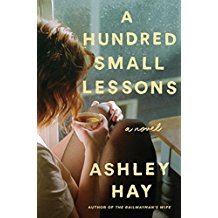 The house at the center of this gut-wrenching novel is a modest home in Brisbane, where a new family--Lucy Kiss, along with her husband, Ben, and son, Tom--has taken up residence. It was Ben’s desire to move to Brisbane, and Lucy has reluctantly agreed. Right away, she senses a strange presence and is certain it has to be Elsie, the previous owner, who adored the house and is still alive in a nearby nursing home. Ben doesn’t believe Lucy’s wild claim that Elsie is making secret visits; and the tension between the couple grows. Meanwhile, Elsie struggles to accept the new terms of her life, finding refuge in memories of her beloved husband and twins, reckoning with old regrets and new realizations. In alternating narratives, Hay dives deep into the inner lives of both women, examining their greatest regrets, transformational moments, and the relationships that didn’t turn out as planned. Hay’s prose is stunningly, shatteringly beautiful, and the emotional punch she delivers as the women’s paths ultimately converge makes this seemingly quiet novel a breathless and powerful read.Maranatha RoadHeather Bell Adams
The house at the center of this gut-wrenching novel is a modest home in Brisbane, where a new family--Lucy Kiss, along with her husband, Ben, and son, Tom--has taken up residence. It was Ben’s desire to move to Brisbane, and Lucy has reluctantly agreed. Right away, she senses a strange presence and is certain it has to be Elsie, the previous owner, who adored the house and is still alive in a nearby nursing home. Ben doesn’t believe Lucy’s wild claim that Elsie is making secret visits; and the tension between the couple grows. Meanwhile, Elsie struggles to accept the new terms of her life, finding refuge in memories of her beloved husband and twins, reckoning with old regrets and new realizations. In alternating narratives, Hay dives deep into the inner lives of both women, examining their greatest regrets, transformational moments, and the relationships that didn’t turn out as planned. Hay’s prose is stunningly, shatteringly beautiful, and the emotional punch she delivers as the women’s paths ultimately converge makes this seemingly quiet novel a breathless and powerful read.Maranatha RoadHeather Bell Adams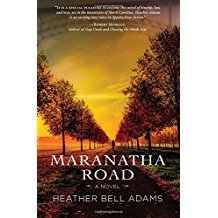 When Sadie loses her only son, Mark, she’s prepared for life to go on in its new form: vacant and wanting, the old intimacies of marriage, family, and friendship dulled and warped by grief. She finds energy, however, in her anger at young Tinley Greene, whom Sadie has reason to believe was partly to blame for Mark’s death. Tinley has troubles enough of her own--orphaned and all but homeless, she’s desperate to do right by her baby and make a new life, even if that seems impossible without Mark. Told in alternating viewpoints, Maranatha Road brings Sadie and Tinley closer together than either of them may have planned or wanted, showing that even in the face of heart-wrenching tragedy, grace is never far. This is a beautifully told, compassionate debut.Drowning Above WaterAlyssa Herron
When Sadie loses her only son, Mark, she’s prepared for life to go on in its new form: vacant and wanting, the old intimacies of marriage, family, and friendship dulled and warped by grief. She finds energy, however, in her anger at young Tinley Greene, whom Sadie has reason to believe was partly to blame for Mark’s death. Tinley has troubles enough of her own--orphaned and all but homeless, she’s desperate to do right by her baby and make a new life, even if that seems impossible without Mark. Told in alternating viewpoints, Maranatha Road brings Sadie and Tinley closer together than either of them may have planned or wanted, showing that even in the face of heart-wrenching tragedy, grace is never far. This is a beautifully told, compassionate debut.Drowning Above WaterAlyssa Herron Herron travels far in this novel, from seedy Pittsburgh hotels to unseen areas of Poland where too many young girls meet their fates, and she doesn’t flinch as she describes horrific scenes of brutality and cruelty in the underworld of human trafficking.An unforgettable read. There is a powerful urgency to the storytelling in this novel, the plot unfolding page by riveting page, and the redemption Herron allows her characters is deft and wholly earned. Drowning Above Water is the rarest of literary gems: a gorgeously written novel with a story that grabs and won’t let go.Standard DeviationKatherine Heiny
Herron travels far in this novel, from seedy Pittsburgh hotels to unseen areas of Poland where too many young girls meet their fates, and she doesn’t flinch as she describes horrific scenes of brutality and cruelty in the underworld of human trafficking.An unforgettable read. There is a powerful urgency to the storytelling in this novel, the plot unfolding page by riveting page, and the redemption Herron allows her characters is deft and wholly earned. Drowning Above Water is the rarest of literary gems: a gorgeously written novel with a story that grabs and won’t let go.Standard DeviationKatherine Heiny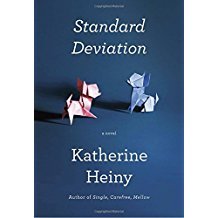 Over a decade ago, Graham Daltry left his wife, Elspeth, for a vivacious woman named Audra, to whom he is now happily married. Graham spends his days cringing over Audra’s intimate conversations with strangers and worrying about his special-needs son, Matthew, whose Asperger’s terrifies Graham as he tries to imagine Matthew’s future. When Matthew asks to join an origami club, the entire family finds themselves in a new realm of unlikely friends and surprising independence. Around the same time, Elspeth contacts Graham regarding an aunt’s strange bequest, and Audra decides to pursue a friendship with Elspeth and her boyfriend, Bentrup--dragging Graham into social interactions that evolve from painfully awkward to surprisingly sweet.Through Matthew’s tenure in the origami club, Audra’s many houseguests, and the untraditional new friendship with Elspeth, Audra talks--and talks and talks. Her constant commentary is the heart and soul of the novel, laugh-out-loud funny as well as earnest and good-intentioned. Heiny navigates her characters through one fraught social encounter after another, an apt reflection of their family life, where love is everywhere but is rarely easy. For Graham, the heartbreak that accompanies a full life has always been bearable--until his own child is the one not chosen, the one left behind.Saints for All OccasionsJ. Courtney Sullivan
Over a decade ago, Graham Daltry left his wife, Elspeth, for a vivacious woman named Audra, to whom he is now happily married. Graham spends his days cringing over Audra’s intimate conversations with strangers and worrying about his special-needs son, Matthew, whose Asperger’s terrifies Graham as he tries to imagine Matthew’s future. When Matthew asks to join an origami club, the entire family finds themselves in a new realm of unlikely friends and surprising independence. Around the same time, Elspeth contacts Graham regarding an aunt’s strange bequest, and Audra decides to pursue a friendship with Elspeth and her boyfriend, Bentrup--dragging Graham into social interactions that evolve from painfully awkward to surprisingly sweet.Through Matthew’s tenure in the origami club, Audra’s many houseguests, and the untraditional new friendship with Elspeth, Audra talks--and talks and talks. Her constant commentary is the heart and soul of the novel, laugh-out-loud funny as well as earnest and good-intentioned. Heiny navigates her characters through one fraught social encounter after another, an apt reflection of their family life, where love is everywhere but is rarely easy. For Graham, the heartbreak that accompanies a full life has always been bearable--until his own child is the one not chosen, the one left behind.Saints for All OccasionsJ. Courtney Sullivan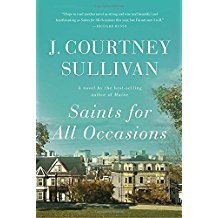 Nora and Theresa have always been an odd sibling couple, with Nora the practical, timid older sister and Theresa the free-spirited, outgoing younger. With their mother long dead, Nora has raised Theresa in their beloved home in Ireland. When Nora’s fiance, Charlie, decides to go to America and asks Nora to follow, Nora brings Theresa along, hoping she’ll find a good teaching job. But when they settle in Dorchester, Theresa has other interests--namely, handsome Walter McClain. Her pregnancy is a shock to everyone, and Nora devises a desperate act of sisterly devotion that ultimately rips them apart. When Theresa becomes a cloistered nun, the past proves too fraught for their relationship to survive. Only in the most tragic of circumstances do the sisters finally face the possibility of reunion.Sullivan’s story spans decades and continents but she keeps a laser focus on Nora, Theresa, and the immediate family members who fill their world. Both sisters are, in a way, victims of their place and time, but Sullivan moves beyond rightful condemnation of past societal transgressions to movingly explore how personal decisions--both wise and foolish--can shape a life forever. HourglassDani Shapiro
Nora and Theresa have always been an odd sibling couple, with Nora the practical, timid older sister and Theresa the free-spirited, outgoing younger. With their mother long dead, Nora has raised Theresa in their beloved home in Ireland. When Nora’s fiance, Charlie, decides to go to America and asks Nora to follow, Nora brings Theresa along, hoping she’ll find a good teaching job. But when they settle in Dorchester, Theresa has other interests--namely, handsome Walter McClain. Her pregnancy is a shock to everyone, and Nora devises a desperate act of sisterly devotion that ultimately rips them apart. When Theresa becomes a cloistered nun, the past proves too fraught for their relationship to survive. Only in the most tragic of circumstances do the sisters finally face the possibility of reunion.Sullivan’s story spans decades and continents but she keeps a laser focus on Nora, Theresa, and the immediate family members who fill their world. Both sisters are, in a way, victims of their place and time, but Sullivan moves beyond rightful condemnation of past societal transgressions to movingly explore how personal decisions--both wise and foolish--can shape a life forever. HourglassDani Shapiro Readers may come to Dani Shapiro’s new memoir feeling as if they know quite a lot about her already. In previous memoirs, she’s documented the fumblings, questions, and triumphs that have marked her life across four decades. In Hourglass, she’s both more generous and riskier, exposing the tremors underpinning her eighteen years of marriage to the spouse she refers to as M. Stretching her story across time, from the day they met to the present, Shapiro connects often mundane moments and memories to create a portrait of a marriage--and a life--that owes as much to good fortune as to sheer determination and faith.Among many, many remarkable elements of this memoir is how adept Shapiro is at reminding readers of the limits of her literary exposure. While she explores in some depth the near-loss of her young son, she offers only glimpses of other extreme heartaches--a miscarriage, a biopsy--suggesting that the fissures and devotion within her marriage go much deeper than these pages reveal. Rather than tell all, Shapiro tells some--and her memoir is more moving for the discretion. Others’ marriages can never be fully understood. Shapiro makes the case that even one’s own is, in some ways, an enduring mystery.Our Short HistoryLauren Grodstein
Readers may come to Dani Shapiro’s new memoir feeling as if they know quite a lot about her already. In previous memoirs, she’s documented the fumblings, questions, and triumphs that have marked her life across four decades. In Hourglass, she’s both more generous and riskier, exposing the tremors underpinning her eighteen years of marriage to the spouse she refers to as M. Stretching her story across time, from the day they met to the present, Shapiro connects often mundane moments and memories to create a portrait of a marriage--and a life--that owes as much to good fortune as to sheer determination and faith.Among many, many remarkable elements of this memoir is how adept Shapiro is at reminding readers of the limits of her literary exposure. While she explores in some depth the near-loss of her young son, she offers only glimpses of other extreme heartaches--a miscarriage, a biopsy--suggesting that the fissures and devotion within her marriage go much deeper than these pages reveal. Rather than tell all, Shapiro tells some--and her memoir is more moving for the discretion. Others’ marriages can never be fully understood. Shapiro makes the case that even one’s own is, in some ways, an enduring mystery.Our Short HistoryLauren Grodstein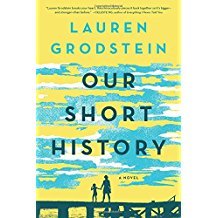 Karen Neulander is dying. Soon. And as a single mother with a six-year-old son, Jacob, there’s no peace to be made with her fate. Still, she’s doing her best to carry on as normally as possible, working as a political consultant and giving Jacob plenty of time with his aunt, uncle, and cousins--the family he’ll live with when Karen is gone. Karen manages to live with knowing she’ll never see Jacob grow up by writing him a lengthy letter full of advice and anecdotes. But her best-laid plans are upended when Jacob’s requests to meet his father intensify. When Karen manages to find him, she’s stunned that her former lover is more than eager to meet his son--and that father and son alike want a relationship that Karen believes will ruin everything.Our Short History is heartbreaking on every page, so it’s fortunate that Grodstein has given us a narrator so strong, funny, rueful, and wise. Karen’s journey is magnetic, even though we know where it will end. Her dread at the unwelcome reappearance of Jacob’s father--and her willingness, nonetheless, to bring him into the fold for Jacob’s sake--shows movingly the lengths parents will go to ensure their children’s happiness even when their wishes seem too wild, too dangerous, to lasso and tame. A stunning novel.IdahoEmily Ruskovich
Karen Neulander is dying. Soon. And as a single mother with a six-year-old son, Jacob, there’s no peace to be made with her fate. Still, she’s doing her best to carry on as normally as possible, working as a political consultant and giving Jacob plenty of time with his aunt, uncle, and cousins--the family he’ll live with when Karen is gone. Karen manages to live with knowing she’ll never see Jacob grow up by writing him a lengthy letter full of advice and anecdotes. But her best-laid plans are upended when Jacob’s requests to meet his father intensify. When Karen manages to find him, she’s stunned that her former lover is more than eager to meet his son--and that father and son alike want a relationship that Karen believes will ruin everything.Our Short History is heartbreaking on every page, so it’s fortunate that Grodstein has given us a narrator so strong, funny, rueful, and wise. Karen’s journey is magnetic, even though we know where it will end. Her dread at the unwelcome reappearance of Jacob’s father--and her willingness, nonetheless, to bring him into the fold for Jacob’s sake--shows movingly the lengths parents will go to ensure their children’s happiness even when their wishes seem too wild, too dangerous, to lasso and tame. A stunning novel.IdahoEmily Ruskovich Wade Mitchell’s past is split brutally into a before and after: one one lovely summer day, an ordinary errand--chopping wood in the mountains--left one of his daughters missing, and one dead. Years later, Wade’s new wife, Ann, tries in her own quiet way to unravel the mystery of what happened, no easy task since Wade has never been willing to discuss it--and, more problematic, his memory is rapidly disappearing. Ann and Wade live more or less contentedly in the knowledge that their daily life is fundamentally different from other people’s, and that unlucky genes have fated their happiness to be fleeting. Meanwhile, in a women’s prison, two women flounder into an unexpected friendship that results in the one thing no one in this fractured family web has ever sought: redemption.With a narrative that skips back and forth in time and across multiple points of view, Idaho plunges into the lifelong fissures left by unfathomable loss and shows how pain can change and recede without necessarily fading. Ruskovich’s prose is poetic and searing, but her spot-on descriptions of nature--both human and environmental--stop short of easy explanations. The horrific act at the center of this novel defies comprehension, but Ruskovich’s beautiful story ultimately shows that accepting even the most terrible mysteries is the only way to carry on.
Wade Mitchell’s past is split brutally into a before and after: one one lovely summer day, an ordinary errand--chopping wood in the mountains--left one of his daughters missing, and one dead. Years later, Wade’s new wife, Ann, tries in her own quiet way to unravel the mystery of what happened, no easy task since Wade has never been willing to discuss it--and, more problematic, his memory is rapidly disappearing. Ann and Wade live more or less contentedly in the knowledge that their daily life is fundamentally different from other people’s, and that unlucky genes have fated their happiness to be fleeting. Meanwhile, in a women’s prison, two women flounder into an unexpected friendship that results in the one thing no one in this fractured family web has ever sought: redemption.With a narrative that skips back and forth in time and across multiple points of view, Idaho plunges into the lifelong fissures left by unfathomable loss and shows how pain can change and recede without necessarily fading. Ruskovich’s prose is poetic and searing, but her spot-on descriptions of nature--both human and environmental--stop short of easy explanations. The horrific act at the center of this novel defies comprehension, but Ruskovich’s beautiful story ultimately shows that accepting even the most terrible mysteries is the only way to carry on.
November 29, 2017
Who, or What, Is Waiting?
This post was written on November 29, 2017
It’s the time of year when houses feel haunted, when the indoor life of a home takes precedence over porches and patios, backyards and neighborhood parks. It’s a claustrophobic time, if your kids are very little--I remember well those winter days in Brooklyn and, eventually, New Jersey, when my entire life was consumed by the question of how, or where, we’d spend our days. Pushing a stroller through the bitter wind to reach a coffee shop where I’d end up having to change a diaper or breastfeed--well, let’s just say I’m glad those days are over.
It’s a relief, now, to have reason to be home, cozy in our warm house surrounded by all the things we love, and the things we love to do. The clanking radiators are a welcome sound of winter. Leg warmers and fleece-lined leggings and lambswool slippers are my reward for not leaving the house.
But winter is also the time when ghosts rise up from the walls--a palpable energy that goes beyond personal memory. It’s a building up of emotion, the kind of intense feeling that accumulates over years, or a lifetime. Last year around this time, I wrote about the betrayal of my childhood home in Appalachia, how it was desecrated by heroin addicts who put raw meat through holes in the walls when they were evicted, who filled the attic with their foul waste and syringes, and whose children were living in the house with them, witnessing too much. The memory of that visit still chills me. I felt the ghost of my own childhood self there, dismayed and heartbroken. I couldn’t help her. I couldn’t bring her back.
This year, I’ve written about the grand old houses in that same hometown--turreted and enormous but also crumbling, abused, forgotten--and the house we finally did adopt as our fixiest-fixer-upper yet. It’s been so fulfilling to watch this house’s progress over the past six months. I last visited in July, when the framing was in progress. Last week, I finally had the chance to see it again, in its nearly finished state. There are walls, windows, floors, lights, plumbing. Kitchen cabinets and bathroom vanities are waiting for their turn to be placed. The light switches work. The house is warm. The smell of cat piss does not wallop you across the face when you step inside (though the contractor said it does rise up anytime they cut deep into the floors). The turret room is stunning, and the secret room inside the turret--accessible by a pull-down ladder in the ceiling--is reason enough to ditch our New Jersey life and move in ourselves instead of selling the place.
And the tunnel in the basement, that goes halfway across the busy main street outside--well, the tunnel remains a mystery. Last week, for the first time, I ventured all the way in, to the point where it’s been blocked off, and studied every inch of the walls with a flashlight, hoping for clues. The house didn’t give up its secrets. I saw some petrified white spiders, some giant rusty nails supporting the structure, some remnants of wire affixed to the walls. I found a glass ashtray nestled into a crumbling alcove. But no indication of what the tunnel was, where it might lead, who may have used it--in the far or recent past.
I’d hoped to sleep overnight in the house, to witness its secret nighttime life and leave myself open to the ghosts who are surely rattled--but pleased?--by the transformation, but that wasn’t possible this time. Perhaps I’ll still have the chance. Looking out from the turret in the middle of the night as people have done for over a century, into the hills of town, the tunnel underneath a gaping maw of mystery and my own childhood home nearly visible two blocks away--it’s a compelling thought, inspiring and terrifying. I wonder what I’d see, or what I’d hear. I wonder what, or who, is waiting for the house’s second life to begin.
Who, or What, Is Waiting?

 Margo Orlando Littell is the author of Each Vagabond by Name.
Margo Orlando Littell is the author of Each Vagabond by Name.
May 2, 2017
The House That Got Away (Almost)
This post was written on May 2, 2017.
As a fiction writer, drawing from real life to create stories is nothing unusual. Overheard conversations, random observations, newspaper articles, interactions on planes and at the bus stop--all of this gets filed away. Sometimes it reappears later, occasionally unchanged but more often resculpted, reshaped. (Unless it’s a line like “Where’s the denim jackets with the sleeves tore off?”, asked urgently by a breathless man in a local discount store. You can’t make up a line like that. Why did he need a sleeveless jacket so badly? And why couldn’t he just tear the sleeves off a jacket himself?)
In the novel I’m working on now, which focuses on slum landlording in a small town, this process of inspiration has begun moving in reverse. When I first began planning and plotting my story, I knew I wanted blighted properties to be a focus for my characters. For the past couple of years, each time I’ve visited my hometown, I’ve called up a realtor and had him take me around to some of the terrible properties up for sale--mostly multi-family rentals, but also some single-family homes and commercial properties. The places I’ve seen would be shocking to most of my acquaintances in the New Jersey suburbs, where homes go hundreds of thousands of dollars over million-dollar asking prices. The homes I saw were priced at $30K or less. Several times, the door of the property fell off when the realtor tried to unlock it. The properties in my hometown are often aggressively neglected; landlords (slumlords) squeeze as much money as they can from them, and then leave them for dead.
Or, as it turns out, for someone like me.
I suppose it was only a matter of time before my research began giving way to real-life possibilities. Many of the ruined houses in my hometown were once coal barons’ grand mansions, and they now serve as a reminder of how far the town has fallen--but they’re also absolutely beautiful, in their broken-down way. Unfortunately for us, Andrew and I are both attracted to romantic ruin, cursed with the tendency to see past crumbling walls and holes in the floor to the scant remains of original woodwork, shadows of old moldings. We see a chopped-off attic roof and imagine, giddily, replacing the long-missing turret. Trailing after the realtor, peeking into closets and climbing into attics, we’d look at each other, besotted, Andrew’s eyes already filled with complicated spreadsheets calculating cash, equity, rent, mortgages.
Our one saving grace so far--the one thing keeping us from making offers on these homes--has been the fact that neither of us knows the first thing about property development or construction. We love the idea of restoring old homes, but we have no practical knowledge whatsoever. Plus, we don’t live in the area, making logistics difficult. Still, this hasn’t kept us from frequently dreaming over southwestern PA real estate listings.
There was one house, in particular, that got away.
It’s a red-brick behemoth on one of the main thoroughfares in town, one of the old mansions people point to when they talk about Connellsville’s history as a boom town. It’s been a disaster for decades, actively deteriorating every year. It has no electrical work or plumbing--thieves broke in and stole all the wires and pipes. Andrew and I went into the house two years ago. The smell inside--dog and decay--was so intense it was an almost physical force. Still, we were overcome with the desire to restore the house to its former glory, new turret and all. But the asking price was far too much for the work required. This wasn’t just a renovation. This would entail rebuilding the interior entirely. We couldn’t make the leap.
Until now!
As of this month, we are officially 50% owners of that historic house. Friends of ours (who are much more experienced in property matters) bought the house last year and have been pouring their energy into demolition and planning. We’ve now partnered with them to launch the restoration. It’s exciting in so many ways. We’ll be learning about property matters from our skilled friends, while helping to bring this home back from the brink.
It’s exciting for me creatively as well: this house was the inspiration for the fictional house that is the focus of my work-in-progress. The house in my novel isn’t in as rough shape, but specific aspects--the missing turret, the ruined opulence, the palpable sense of lives badly lived--were inspired by what I saw, and felt, when I went inside.
How strange that the house is now actually, partly, mine. This is a clear, strange case of life imitating fiction, of fiction inspiring life.
The House That Got Away (Almost)
 As a fiction writer, drawing from real life to create stories is nothing unusual. Overheard conversations, random observations, newspaper articles, interactions on planes and at the bus stop--all of this gets filed away. Sometimes it reappears later, occasionally unchanged but more often resculpted, reshaped. (Unless it’s a line like “Where’s the denim jackets with the sleeves tore off?”, asked urgently by a breathless man in a local discount store. You can’t make up a line like that. Why did he need a sleeveless jacket so badly? And why couldn’t he just tear the sleeves off a jacket himself?)In the novel I’m working on now, which focuses on slum landlording in a small town, this process of inspiration has begun moving in reverse. When I first began planning and plotting my story, I knew I wanted blighted properties to be a focus for my characters. For the past couple of years, each time I’ve visited my hometown, I’ve called up a realtor and had him take me around to some of the terrible properties up for sale--mostly multi-family rentals, but also some single-family homes and commercial properties. The places I’ve seen would be shocking to most of my acquaintances in the New Jersey suburbs, where homes go hundreds of thousands of dollars over million-dollar asking prices. The homes I saw were priced at $30K or less. Several times, the door of the property fell off when the realtor tried to unlock it. The properties in my hometown are often aggressively neglected; landlords (slumlords) squeeze as much money as they can from them, and then leave them for dead.Or, as it turns out, for someone like me.I suppose it was only a matter of time before my research began giving way to real-life possibilities. Many of the ruined houses in my hometown were once coal barons’ grand mansions, and they now serve as a reminder of how far the town has fallen--but they’re also absolutely beautiful, in their broken-down way. Unfortunately for us, Andrew and I are both attracted to romantic ruin, cursed with the tendency to see past crumbling walls and holes in the floor to the scant remains of original woodwork, shadows of old moldings. We see a chopped-off attic roof and imagine, giddily, replacing the long-missing turret. Trailing after the realtor, peeking into closets and climbing into attics, we’d look at each other, besotted, Andrew’s eyes already filled with complicated spreadsheets calculating cash, equity, rent, mortgages.Our one saving grace so far--the one thing keeping us from making offers on these homes--has been the fact that neither of us knows the first thing about property development or construction. We love the idea of restoring old homes, but we have no practical knowledge whatsoever. Plus, we don’t live in the area, making logistics difficult. Still, this hasn’t kept us from frequently dreaming over southwestern PA real estate listings.There was one house, in particular, that got away.It’s a red-brick behemoth on one of the main thoroughfares in town, one of the old mansions people point to when they talk about Connellsville’s history as a boom town. It’s been a disaster for decades, actively deteriorating every year. It has no electrical work or plumbing--thieves broke in and stole all the wires and pipes. Andrew and I went into the house two years ago. The smell inside--dog and decay--was so intense it was an almost physical force. Still, we were overcome with the desire to restore the house to its former glory, new turret and all. But the asking price was far too much for the work required. This wasn’t just a renovation. This would entail rebuilding the interior entirely. We couldn’t make the leap.Until now!As of this month, we are officially 50% owners of that historic house. Friends of ours (who are much more experienced in property matters) bought the house last year and have been pouring their energy into demolition and planning. We’ve now partnered with them to launch the restoration. It’s exciting in so many ways. We’ll be learning about property matters from our skilled friends, while helping to bring this home back from the brink.It’s exciting for me creatively as well: this house was the inspiration for the fictional house that is the focus of my work-in-progress. The house in my novel isn’t in as rough shape, but specific aspects--the missing turret, the ruined opulence, the palpable sense of lives badly lived--were inspired by what I saw, and felt, when I went inside.How strange that the house is now actually, partly, mine. This is a clear, strange case of life imitating fiction, of fiction inspiring life.Vagabond News
As a fiction writer, drawing from real life to create stories is nothing unusual. Overheard conversations, random observations, newspaper articles, interactions on planes and at the bus stop--all of this gets filed away. Sometimes it reappears later, occasionally unchanged but more often resculpted, reshaped. (Unless it’s a line like “Where’s the denim jackets with the sleeves tore off?”, asked urgently by a breathless man in a local discount store. You can’t make up a line like that. Why did he need a sleeveless jacket so badly? And why couldn’t he just tear the sleeves off a jacket himself?)In the novel I’m working on now, which focuses on slum landlording in a small town, this process of inspiration has begun moving in reverse. When I first began planning and plotting my story, I knew I wanted blighted properties to be a focus for my characters. For the past couple of years, each time I’ve visited my hometown, I’ve called up a realtor and had him take me around to some of the terrible properties up for sale--mostly multi-family rentals, but also some single-family homes and commercial properties. The places I’ve seen would be shocking to most of my acquaintances in the New Jersey suburbs, where homes go hundreds of thousands of dollars over million-dollar asking prices. The homes I saw were priced at $30K or less. Several times, the door of the property fell off when the realtor tried to unlock it. The properties in my hometown are often aggressively neglected; landlords (slumlords) squeeze as much money as they can from them, and then leave them for dead.Or, as it turns out, for someone like me.I suppose it was only a matter of time before my research began giving way to real-life possibilities. Many of the ruined houses in my hometown were once coal barons’ grand mansions, and they now serve as a reminder of how far the town has fallen--but they’re also absolutely beautiful, in their broken-down way. Unfortunately for us, Andrew and I are both attracted to romantic ruin, cursed with the tendency to see past crumbling walls and holes in the floor to the scant remains of original woodwork, shadows of old moldings. We see a chopped-off attic roof and imagine, giddily, replacing the long-missing turret. Trailing after the realtor, peeking into closets and climbing into attics, we’d look at each other, besotted, Andrew’s eyes already filled with complicated spreadsheets calculating cash, equity, rent, mortgages.Our one saving grace so far--the one thing keeping us from making offers on these homes--has been the fact that neither of us knows the first thing about property development or construction. We love the idea of restoring old homes, but we have no practical knowledge whatsoever. Plus, we don’t live in the area, making logistics difficult. Still, this hasn’t kept us from frequently dreaming over southwestern PA real estate listings.There was one house, in particular, that got away.It’s a red-brick behemoth on one of the main thoroughfares in town, one of the old mansions people point to when they talk about Connellsville’s history as a boom town. It’s been a disaster for decades, actively deteriorating every year. It has no electrical work or plumbing--thieves broke in and stole all the wires and pipes. Andrew and I went into the house two years ago. The smell inside--dog and decay--was so intense it was an almost physical force. Still, we were overcome with the desire to restore the house to its former glory, new turret and all. But the asking price was far too much for the work required. This wasn’t just a renovation. This would entail rebuilding the interior entirely. We couldn’t make the leap.Until now!As of this month, we are officially 50% owners of that historic house. Friends of ours (who are much more experienced in property matters) bought the house last year and have been pouring their energy into demolition and planning. We’ve now partnered with them to launch the restoration. It’s exciting in so many ways. We’ll be learning about property matters from our skilled friends, while helping to bring this home back from the brink.It’s exciting for me creatively as well: this house was the inspiration for the fictional house that is the focus of my work-in-progress. The house in my novel isn’t in as rough shape, but specific aspects--the missing turret, the ruined opulence, the palpable sense of lives badly lived--were inspired by what I saw, and felt, when I went inside.How strange that the house is now actually, partly, mine. This is a clear, strange case of life imitating fiction, of fiction inspiring life.Vagabond News IPPY Winner! I’m beyond thrilled to announce thatEach Vagabond by Namehas won a Gold Medal for Regional Fiction (Mid-Atlantic) in the 2017 IPPY Awards, a leading book awards competition for university, independent, and self-published books. I’ll be accepting my award in New York City at the end of the month, andVagabondwill be on display in Book Expo America’s New Title Showcase, May 31 to June 2.
IPPY Winner! I’m beyond thrilled to announce thatEach Vagabond by Namehas won a Gold Medal for Regional Fiction (Mid-Atlantic) in the 2017 IPPY Awards, a leading book awards competition for university, independent, and self-published books. I’ll be accepting my award in New York City at the end of the month, andVagabondwill be on display in Book Expo America’s New Title Showcase, May 31 to June 2. Love the book? A gentle reminder that Amazon reviews are the best way you can supportVagabond. If you haven’t left a review, I’d be so grateful if you would. Just a line will do! It’s the number of reviews that counts. It really does make a difference.
Love the book? A gentle reminder that Amazon reviews are the best way you can supportVagabond. If you haven’t left a review, I’d be so grateful if you would. Just a line will do! It’s the number of reviews that counts. It really does make a difference.
March 21, 2017
In Search of Lost Books
This post was written on March 21, 2017.
The book I can’t remember has haunted me for thirty years.
In the book I can’t remember, there’s a boy named Ty. I see him with dark hair, a very young teenager, maybe even as young as eleven or twelve. He’s in a house. He’s hiding from someone or something, and he knows the being he’s hiding from is upstairs. In his palm is a small, smooth metal egg. This egg gives him the ability to travel through time--in fact, he’s traveled through time (forward or backward, I do not know) to get to the house he’s in now. The book is young adult science fiction. I loved it when I was a kid. It must have been published in the early 1990s or late 1980s. And though I’ve searched for this book for years, I’ve never been able to find out what it’s called.
Until today.
In this weekend’s New York Times Magazine was a fantastic article called “Stump the Bookseller,” about a blog by the same name that traffics in people’s futile and somewhat desperate searches for books they vaguely remember from their childhoods. The books they’re searching for are all very different, but their memories of them are specific and very limited--just an evocative snippet of an image or scene. By posting to the blog, they’re hoping someone will be able to recognize--and name--the book they’re referencing. Some searches are successful, with readers providing titles, Amazon links, ISBNs. Others receive no replies.
Today, I was going to post to Stump the Bookseller about my own lost book, the YA science fiction I used to check out from the library during the summers we spent with my grandparents in Fairport, NY, in the 1980s and 90s. My occasional internet searches over the years have proved fruitless, but, on a whim, today I Googled the bits I remembered: “ty time travel egg YA 1980s.” And, lo and behold, in the results was a Goodreads list of Children’s Time Travel Fiction of the 1980s. (By pausing here to all-caps shout THE INTERNET IS FREAKING AMAZING!!!, I show my age. So be it. Seriously, it’s freaking amazing.) And as I scrolled through the list, I found a book called The Green Futures of Tycho, by William Sleator, published in 1984. Here’s the summary from Goodreads:
When eleven-year-old Tycho discovers that the mysterious egg-shaped object he dug up in his garden is a time travel device, he can’t resist using his newfound power. Soon he is jumping back and forth in time, mostly to play tricks on his bossy older brothers and sister. But every time he uses the device, he notices that things are different when he gets back—and the futures he visits are getting darker and scarier. Then Tycho comes face-to-face with the most terrible thing of all: his grown-up self. Can Tycho prevent the terrible future he sees from coming true?
Tycho. Ty. The forbidding being he knows is lurking upstairs? His adult self, to whom his time-traveling has led him. I found the book.
I’m giddy. I can’t wait to read it again. A quick Amazon search shows a new hardcover copy priced at $2,128.00; a used paperback version is a more reasonable $15.00. I know the book can’t possibly be as gripping and wonderful as I remember, but having the ability now to buy the book, hold it in my hands, revisit those blurry scenes and bring them back into sharp specificity--it doesn’t feel as dramatic as reclaiming part of my childhood, but it also kind of does.
In the article about the lost-book blog, writer Alice Gregory says, “Shared with nobody, inaccessible in full even to us, refracted through the consciousness of a now-remote self, memories of books we read while only partly sentient are among the weirdest we have.” A lost childhood book hovers endlessly on the periphery of real life, always on the outside of more meaningful and concrete memories that have piled up pompously in adulthood. This time, at long last, my lost book can fully enter my consciousness. Perhaps another lost book will swim blurrily to the surface now, and my next search can begin.
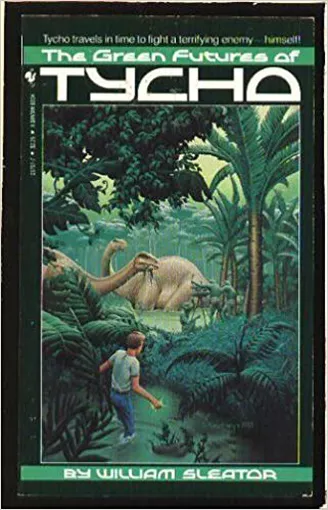
In Search of Lost Books
 In the book I can’t remember, there’s a boy named Ty. I see him with dark hair, a very young teenager, maybe even as young as eleven or twelve. He’s in a house. He’s hiding from someone or something, and he knows the being he’s hiding from is upstairs. In his palm is a small, smooth metal egg. This egg gives him the ability to travel through time--in fact, he’s traveled through time (forward or backward, I do not know) to get to the house he’s in now. The book is young adult science fiction. I loved it when I was a kid. It must have been published in the early 1990s or late 1980s. And though I’ve searched for this book for years, I’ve never been able to find out what it’s called.Until today.In this weekend’sNew York Times Magazinewas a fantastic article called “Stump the Bookseller,” about a blog by the same name that traffics in people’s futile and somewhat desperate searches for books they vaguely remember from their childhoods. The books they’re searching for are all very different, but their memories of them are specific and very limited--just a tiny, evocative snippet of an image or scene. By posting to the blog, they’re hoping someone will be able to recognize--and name--the book they’re referencing. Some searches are successful, with readers providing titles, Amazon links, ISBNs. Others receive no replies.Today, I was going to post to Stump the Bookseller about my own lost book, the YA science fiction I used to check out from the library during the summers we spent with my grandparents in Fairport, NY, in the 1980s and 90s. My occasional internet searches over the years have proved fruitless, but, on a whim, today I Googled the bits I remembered: “ty time travel egg YA 1980s.” And, lo and behold, in the results was a Goodreads list of Children’s Time Travel Fiction of the 1980s. (By pausing here to all-caps shout THE INTERNET IS FREAKING AMAZING!!!, I show my age. So be it. Seriously, it’s freaking amazing.) And as I scrolled through the list, I found a book calledThe Green Futures of Tycho, by William Sleator, published in 1984. Here’s the summary from Goodreads:"When eleven-year-old Tycho discovers that the mysterious egg-shaped object he dug up in his garden is a time travel device, he can’t resist using his newfound power. Soon he is jumping back and forth in time, mostly to play tricks on his bossy older brothers and sister. But every time he uses the device, he notices that things are different when he gets back—and the futures he visits are getting darker and scarier. Then Tycho comes face-to-face with the most terrible thing of all: his grown-up self. Can Tycho prevent the terrible future he sees from coming true?"Tycho. Ty. The forbidding being he knows is lurking upstairs? His adult self, to whom his time-traveling has led him. I found the book.I’m giddy. I can’t wait to read it again. A quick Amazon search shows a new hardcover copy priced at $2,128.00; a used paperback version is a more reasonable $15.00. One copy is available in my local library system (!). I know the book can’t possibly be as gripping and wonderful as I remember, but having the ability now to buy the book, hold it in my hands, revisit those blurry scenes and bring them back into sharp specificity--it doesn’t feel as dramatic as reclaiming part of my childhood, but it also kind of does.In the article about the lost-book blog, writer Alice Gregory says, “Shared with nobody, inaccessible in full even to us, refracted through the consciousness of a now-remote self, memories of books we read while only partly sentient are among the weirdest we have.” A lost childhood book hovers endlessly on the periphery of real life, always on the outside of more meaningful and concrete memories that have piled up pompously in adulthood. This time, at long last, my lost book can fully enter my consciousness. Perhaps another lost book will swim blurrily to the surface now, and my next search can begin.Margo Orlando Littell is the author of the novelEach Vagabond by Name.It's always a pleasure to talk aboutEach Vagabond by Name, especially when insightful questions challenge me to think about my writing in new ways. I hope you'll take a look at "The Quiet Power of Small-Town Stories," my interview with Karin Cecile Davidson in the spring issue ofNewfound!
In the book I can’t remember, there’s a boy named Ty. I see him with dark hair, a very young teenager, maybe even as young as eleven or twelve. He’s in a house. He’s hiding from someone or something, and he knows the being he’s hiding from is upstairs. In his palm is a small, smooth metal egg. This egg gives him the ability to travel through time--in fact, he’s traveled through time (forward or backward, I do not know) to get to the house he’s in now. The book is young adult science fiction. I loved it when I was a kid. It must have been published in the early 1990s or late 1980s. And though I’ve searched for this book for years, I’ve never been able to find out what it’s called.Until today.In this weekend’sNew York Times Magazinewas a fantastic article called “Stump the Bookseller,” about a blog by the same name that traffics in people’s futile and somewhat desperate searches for books they vaguely remember from their childhoods. The books they’re searching for are all very different, but their memories of them are specific and very limited--just a tiny, evocative snippet of an image or scene. By posting to the blog, they’re hoping someone will be able to recognize--and name--the book they’re referencing. Some searches are successful, with readers providing titles, Amazon links, ISBNs. Others receive no replies.Today, I was going to post to Stump the Bookseller about my own lost book, the YA science fiction I used to check out from the library during the summers we spent with my grandparents in Fairport, NY, in the 1980s and 90s. My occasional internet searches over the years have proved fruitless, but, on a whim, today I Googled the bits I remembered: “ty time travel egg YA 1980s.” And, lo and behold, in the results was a Goodreads list of Children’s Time Travel Fiction of the 1980s. (By pausing here to all-caps shout THE INTERNET IS FREAKING AMAZING!!!, I show my age. So be it. Seriously, it’s freaking amazing.) And as I scrolled through the list, I found a book calledThe Green Futures of Tycho, by William Sleator, published in 1984. Here’s the summary from Goodreads:"When eleven-year-old Tycho discovers that the mysterious egg-shaped object he dug up in his garden is a time travel device, he can’t resist using his newfound power. Soon he is jumping back and forth in time, mostly to play tricks on his bossy older brothers and sister. But every time he uses the device, he notices that things are different when he gets back—and the futures he visits are getting darker and scarier. Then Tycho comes face-to-face with the most terrible thing of all: his grown-up self. Can Tycho prevent the terrible future he sees from coming true?"Tycho. Ty. The forbidding being he knows is lurking upstairs? His adult self, to whom his time-traveling has led him. I found the book.I’m giddy. I can’t wait to read it again. A quick Amazon search shows a new hardcover copy priced at $2,128.00; a used paperback version is a more reasonable $15.00. One copy is available in my local library system (!). I know the book can’t possibly be as gripping and wonderful as I remember, but having the ability now to buy the book, hold it in my hands, revisit those blurry scenes and bring them back into sharp specificity--it doesn’t feel as dramatic as reclaiming part of my childhood, but it also kind of does.In the article about the lost-book blog, writer Alice Gregory says, “Shared with nobody, inaccessible in full even to us, refracted through the consciousness of a now-remote self, memories of books we read while only partly sentient are among the weirdest we have.” A lost childhood book hovers endlessly on the periphery of real life, always on the outside of more meaningful and concrete memories that have piled up pompously in adulthood. This time, at long last, my lost book can fully enter my consciousness. Perhaps another lost book will swim blurrily to the surface now, and my next search can begin.Margo Orlando Littell is the author of the novelEach Vagabond by Name.It's always a pleasure to talk aboutEach Vagabond by Name, especially when insightful questions challenge me to think about my writing in new ways. I hope you'll take a look at "The Quiet Power of Small-Town Stories," my interview with Karin Cecile Davidson in the spring issue ofNewfound!
March 17, 2017
Real Is a Thing That Happens to You
This post was written on March 17, 2017.
“Do you still love Roary?”
This is the question Lucia asks me at bedtime almost every night. Roary is a plush lion that was mine when I was a kid--I got it for Christmas when I was seven, and it was always one of my favorites. For years it lived in my old bedroom in Connellsville, along with a few other treasured animals. Then, last summer, just before she turned seven, Lucia appropriated it during a visit.
Molly had a Roary too, so Greta took hers, and though Greta loves any and all stuffed animals, Roary didn’t make too dramatic an impression. Lucia, however, fell in love with it immediately and intensely and has been inseparable from Roary ever since.
But Lucia’s relationship with Roary is also filled with pathos. Roary often cries because he “misses his mommy,” and can only be consoled by reassurances that I, his former mom, am right nearby. Lucia insists that I hug and kiss Roary each night in an elaborate ritual, and that’s when she asks her question--”Do you still love Roary?”--to which I reply of course I love Roary, I’ll always love Roary, I’m so happy he’s here with us, he’s so happy to be with you. The answers I give seem to satisfy her, but she’s clearly uneasy, too, at the idea that I could have ever forgotten about this beloved thing. That there was ever a time when I’d moved on, left him behind. Lucia’s devotion to Roary seems, in part, as kind of reparation for my own betrayal.
(This is not the kind of everyday conversation a person with hoarding tendencies should have. What other treasures have I lost along the way?)
Though she’s only seven, Lucia seems to understand that there will be a point when she, too, will leave Roary behind. At breakfast not long ago, Roary in her lap, she said with a kind of uneasy excitement that she’ll give Roary to her own little girl one day--in other words, that he’ll always be with us, passed along forever, never truly forgotten but just re-homed again and again. Lucia’s given him a second life; perhaps this isn’t his last.
Isn’t this kind of a troubling image for a seven-year-old to harbor? To imagine the progression of life, the leaving behind of childhood, even as she’s squarely in it? She shouldn’t have a sense of its ending. She shouldn’t know enough yet to understand that what comes next won’t be as magical, as easy.
The armchair psychologist in me easily finds hours and hours of rich material to analyze in all of this. But she’s my very own child, and I suppose this fraught territory shouldn’t come as any surprise: one of my standard childhood questions was, “Will it last forever?” Still, it’s eerie to remember having exactly the same kind of thoughts when I was her age--in my case, I imagined my security blanket forgotten as I walked away with a blurry-faced husband. (Therapists, we’re going to need more than fifty minutes for this one.)
Roary has held up very well for thirty-three years. For now, he lives on.
PS: Not surprisingly, thinking about Roary and best-loved toys made me think of the cruelest of all children’s books, The Velveteen Rabbit, which is where the title of this post comes from. Of course I don’t condone banning books, any books. But I might make an exception for this one. There is such a thing as a book that’s just too sad.
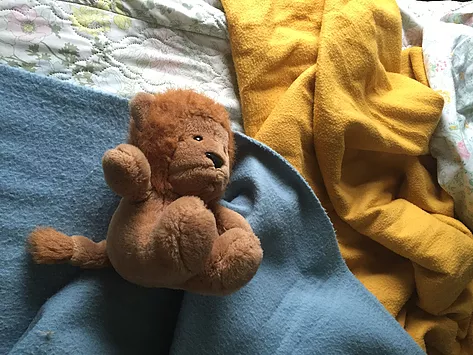
Real Is a Thing That Happens to You
 “Do you still love Roary?”This is the question Lucia asks me at bedtime almost every night. Roary is a plush lion that was mine when I was a kid--I got it for Christmas when I was seven, and it was always one of my favorites. For years it lived in my old bedroom in Connellsville, along with a few other treasured animals. Then, last summer, just beforesheturned seven, Lucia appropriated it during a visit.Molly had a Roary too, so Greta took hers, and though Greta loves any and all stuffed animals, Roary didn’t make too dramatic an impression. Lucia, however, fell in love with it immediately and intensely and has been inseparable from Roary ever since.But Lucia’s relationship with Roary is also filled with pathos. Roary often cries because he “misses his mommy,” and can only be consoled by reassurances that I, his former mom, am right nearby. Lucia insists that I hug and kiss Roary each night in an elaborate ritual, and that’s when she asks her question--”Do you still love Roary?”--to which I reply of course I love Roary, I’ll always love Roary, I’m so happy he’s here with us, he’s so happy to be with you. The answers I give seem to satisfy her, but she’s clearly uneasy, too, at the idea that I could have ever forgotten about this beloved thing. That there was ever a time when I’d moved on, left him behind. Lucia’s devotion to Roary seems, in part, as kind of reparation for my own betrayal.(This is not the kind of everyday conversation a person with hoarding tendencies should have.What other treasures have I lost along the way?)Though she’s only seven, Lucia seems to understand that there will be a point when she, too, will leave Roary behind. At breakfast not long ago, Roary in her lap, she said with a kind of uneasy excitement that she’ll give Roary to her own little girl one day--in other words, that he’ll always be with us, passed along forever, never truly forgotten but just re-homed again and again. Lucia’s given him a second life; perhaps this isn’t his last.Isn’t this kind of a troubling image for a seven-year-old to harbor? To imagine the progression of life, the leaving behind of childhood, even as she’s squarely in it? She shouldn’t have a sense of its ending. She shouldn’t know enough yet to understand that what comes next won’t be as magical, as easy.The armchair psychologist in me easily finds hours and hours of rich material to analyze in all of this. But she’s my very own child, and I suppose this fraught territory shouldn’t come as any surprise: one of my standard childhood questions was, “Will it last forever?” Still, it’s eerie to remember having exactly the same kind of thoughts when I was her age--in my case, I imagined my security blanket forgotten as I walked away with a blurry-faced husband. (Therapists, we’re going to need more than fifty minutes for this one.)Roary has held up very well for thirty-three years. For now, he lives on.PS: Not surprisingly, thinking about Roary and best-loved toys made me think of the cruelest of all children’s books,The Velveteen Rabbit, which is where the title of this post comes from. Of course I don’t condone banning books, any books. But I might make an exception for this one. There is such a thing as a book that’s just too sad.
“Do you still love Roary?”This is the question Lucia asks me at bedtime almost every night. Roary is a plush lion that was mine when I was a kid--I got it for Christmas when I was seven, and it was always one of my favorites. For years it lived in my old bedroom in Connellsville, along with a few other treasured animals. Then, last summer, just beforesheturned seven, Lucia appropriated it during a visit.Molly had a Roary too, so Greta took hers, and though Greta loves any and all stuffed animals, Roary didn’t make too dramatic an impression. Lucia, however, fell in love with it immediately and intensely and has been inseparable from Roary ever since.But Lucia’s relationship with Roary is also filled with pathos. Roary often cries because he “misses his mommy,” and can only be consoled by reassurances that I, his former mom, am right nearby. Lucia insists that I hug and kiss Roary each night in an elaborate ritual, and that’s when she asks her question--”Do you still love Roary?”--to which I reply of course I love Roary, I’ll always love Roary, I’m so happy he’s here with us, he’s so happy to be with you. The answers I give seem to satisfy her, but she’s clearly uneasy, too, at the idea that I could have ever forgotten about this beloved thing. That there was ever a time when I’d moved on, left him behind. Lucia’s devotion to Roary seems, in part, as kind of reparation for my own betrayal.(This is not the kind of everyday conversation a person with hoarding tendencies should have.What other treasures have I lost along the way?)Though she’s only seven, Lucia seems to understand that there will be a point when she, too, will leave Roary behind. At breakfast not long ago, Roary in her lap, she said with a kind of uneasy excitement that she’ll give Roary to her own little girl one day--in other words, that he’ll always be with us, passed along forever, never truly forgotten but just re-homed again and again. Lucia’s given him a second life; perhaps this isn’t his last.Isn’t this kind of a troubling image for a seven-year-old to harbor? To imagine the progression of life, the leaving behind of childhood, even as she’s squarely in it? She shouldn’t have a sense of its ending. She shouldn’t know enough yet to understand that what comes next won’t be as magical, as easy.The armchair psychologist in me easily finds hours and hours of rich material to analyze in all of this. But she’s my very own child, and I suppose this fraught territory shouldn’t come as any surprise: one of my standard childhood questions was, “Will it last forever?” Still, it’s eerie to remember having exactly the same kind of thoughts when I was her age--in my case, I imagined my security blanket forgotten as I walked away with a blurry-faced husband. (Therapists, we’re going to need more than fifty minutes for this one.)Roary has held up very well for thirty-three years. For now, he lives on.PS: Not surprisingly, thinking about Roary and best-loved toys made me think of the cruelest of all children’s books,The Velveteen Rabbit, which is where the title of this post comes from. Of course I don’t condone banning books, any books. But I might make an exception for this one. There is such a thing as a book that’s just too sad. Margo Orlando Littell is the author ofEach Vagabond by Name.
Margo Orlando Littell is the author ofEach Vagabond by Name.
February 6, 2017
A New York Story
This post was written on February 6, 2017.
There’s a New York story I like to tell.
October, 2001. I was living in Manhattan, over a hundred blocks from Ground Zero, but the grief and fear following 9/11 were as potent in Morningside Heights as anywhere else in the city. On Sunday, October 7, I went early to the Cathedral of St. John the Divine to get my ticket for the Earth Mass celebrating the Feast of St. Francis, a mass that would include the Blessing of the Animals. This is an incredible service--a breath-taking celebration with music and dance that concludes with a grand procession of animals down the center aisle of the cathedral. I went every year I lived in New York.
On that particular October day, the mass was as beautiful and moving and comical as always, with tiny pets barking and squirming and escaping from their owners throughout the service. But twined with the cuteness and beauty was a heavy sense of mourning and unease, the horror of 9/11 less than a month past, that New York fear of being pressed with a large crowd inside a city landmark. The search for bodies at the Word Trade Center site was still active. Still, there was the sense of city life carrying on, traditions continuing--daily life its own kind of resilience and resistance.
Then, at the end of the mass, the celebrant came to the pulpit with an announcement: the U.S. had dropped bombs on Afghanistan. A war had begun. A president whom almost no one in that city crowd liked or trusted had turned the world upside down.
Then the enormous bronze doors of the cathedral opened, and the silent Procession of Animals began, each creature with a handler who was openly weeping as they walked. Birds of prey, ox, kangaroo, camel, llama, cow, sheep. Each paraded by, with an animal’s quiet dignity, calm amid the anguish of their handlers and the crowds.
At the end of the procession came the search-and-rescue dogs. They were wearing vests embellished with American flags and had wreaths around their necks. They’d spent weeks searching for bodies but were now in the church, walking calmly down the aisle, a symbol of bravery and peacefulness and love.
This was over fifteen years ago, but--those animals. I’ll never forget it.
I have kids now, and when I look at them this February I feel a shadow of that familiar heartache. Like those proud creatures who had no hand in changing their world for the worse, my kids are innocent. They have to trust us to keep the world safe for them. Safe: as in open-hearted and kind and reasonable, with respect for intelligence, honesty, tradition, education, the rule of law, and basic human decency. I look at them skipping to the bus stop, snuggling their toys, and I’m grateful that they’re too little to fully grasp the shame of what’s happening.
So I’m keeping the news off, selectively skimming headlines, reading a lot of fiction (to myself, and to them), and writing. Fostering empathy by exploring and creating unfamiliar worlds and characters. Doing what we writers and readers do: try, each day, to walk in other people’s shoes.




